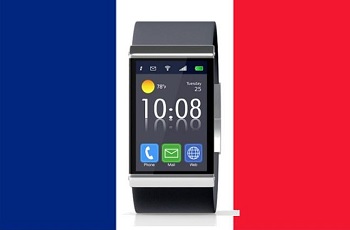Denny |
December 24, 2014
Germany will also be stepping ahead of the United Kingdom when it comes to corporate adoption of wearables.
Ipswitch has recently released the results of a survey that found that Germany and France will be leaps and bounds ahead of the United Kingdom next year with regards to their intentions of using wearable technology within corporations.
The survey examined the number of wearables that will be integrated into the workplace over the next year.
The Ipswitch research looked into the use of wearable technology that will be connected with the corporate IT infrastructure in a number of different countries and organizations. It found a number of different types of insight, such as the indication that there has been little thought given to mobile security and network performance as a result of this integration. Only 13 percent of the participating organizations in the study stated that they had formed a policy in order to cover the impact and management of wearables as they enter the workplace.
German and French businesses are adopting wearable technology at a rate that is faster than the United Kingdom.
 What the research determined was that 33 percent of companies in Germany stated that they plan to bring wearables that are company owned into their workplaces within the next year. In France, that figure for 2015 was 34 percent. In the United Kingdom, about 25 percent of participating businesses claimed that they had similar intentions for the tech.
What the research determined was that 33 percent of companies in Germany stated that they plan to bring wearables that are company owned into their workplaces within the next year. In France, that figure for 2015 was 34 percent. In the United Kingdom, about 25 percent of participating businesses claimed that they had similar intentions for the tech.
Beyond the investigation into the corporate adoption of wearables, this research also examined the attitudes that companies have with regards to employee owned gadgets entering the workplaces. Among the respondents, 36 percent said that they believed that they would be experiencing an “influx” of the number of employees who would be wearing smartwatches and other similar mobile devices in 2015.
In terms of employee owned wearable technology use, it was German businesses that expected to see the highest increase in the devices. Among the respondents from that country, 41 percent were expecting this nature of influx next year. In France, it was 36 percent and it was 33 percent in the United Kingdom.
Consumers are now looking for a different range of selling points in order to attract them to buy.
The speed at which technology has been advancing has also caused mobile trends to start to change in terms of what consumers find most appealing, and which features will cause them to choose one product over another.
Ten years ago, there were no smartphones, and the cell phones that were available were heavy and huge.
In the earlier days, the level of technology that was available made lighter and smaller versions of products such as laptops, cell phones, and tablets into very appealing mobile marketing trends. People didn’t just want their devices to be less heavy and to be thinner, they needed them to be that way in order to make them more practical. Mobile device makers were always keen to be able to say that their device was the thinnest or the lightest in the world.
However, these mobile trends have now changed as the majority of devices are very light and extremely thin.
 Even the battery life, which has traditionally been a vital feature in mobile technology, is starting to decrease in importance as a selling feature. While it is still up there on the list, the fact that the majority of mobile devices can be used for long hours or even days, and portable battery chargers are becoming higher in quality and more affordable means that most gadget owners don’t find themselves in a lurch after making only one long phone call.
Even the battery life, which has traditionally been a vital feature in mobile technology, is starting to decrease in importance as a selling feature. While it is still up there on the list, the fact that the majority of mobile devices can be used for long hours or even days, and portable battery chargers are becoming higher in quality and more affordable means that most gadget owners don’t find themselves in a lurch after making only one long phone call.
It appears as though the goals for lightness and thinness have essentially been reached in the eyes of the consumer, and shoppers are now looking for something more from their mobile technology. The key is for device makers to keep on top of the tech trends and to make sure that as they change tacks so that they are developing and advertising their latest features, they will be capabilities that people actually want, will find relevant, and will convince them to choose their product over another.
Failing to do so will only cause manufacturers to be victims of the latest mobile trends. This helps to explain why iPhone customers with the previous most recent device were not necessarily among those waiting in line for the iPhone 6 upon its release, and why Samsung has been watching declining sales, this year.
 What the research determined was that 33 percent of companies in Germany stated that they plan to bring wearables that are company owned into their workplaces within the next year. In France, that figure for 2015 was 34 percent. In the United Kingdom, about 25 percent of participating businesses claimed that they had similar intentions for the tech.
What the research determined was that 33 percent of companies in Germany stated that they plan to bring wearables that are company owned into their workplaces within the next year. In France, that figure for 2015 was 34 percent. In the United Kingdom, about 25 percent of participating businesses claimed that they had similar intentions for the tech.
 Even the battery life, which has traditionally been a vital feature in mobile technology, is starting to decrease in importance as a selling feature. While it is still up there on the list, the fact that the majority of mobile devices can be used for long hours or even days, and portable battery chargers are becoming higher in quality and more affordable means that most gadget owners don’t find themselves in a lurch after making only one long phone call.
Even the battery life, which has traditionally been a vital feature in mobile technology, is starting to decrease in importance as a selling feature. While it is still up there on the list, the fact that the majority of mobile devices can be used for long hours or even days, and portable battery chargers are becoming higher in quality and more affordable means that most gadget owners don’t find themselves in a lurch after making only one long phone call.